Filing a personal injury lawsuit can be a daunting process, especially if you’re unfamiliar with the legal landscape. While personal injury cases vary based on individual circumstances, the litigation process generally follows a predictable path. Knowing what to expect can help you feel more confident and prepared as you move forward.

This guide will walk you through the litigation stages of a personal injury lawsuit, introduce common personal injury terms, and highlight how to work with your attorney to maximize compensation.
1. Initial Consultation and Case Assessment
The first step in any personal injury case is consulting with an attorney to determine whether you have a viable claim. During this initial consultation, your lawyer will evaluate the facts of your case, review medical records, and discuss any potential damages, including pain and suffering.
Understanding the potential compensation for different types of damages is crucial. Economic damages cover tangible costs like medical expenses and lost wages, while non-economic damages, such as pain and suffering, compensate for the emotional and physical impact on your life. This consultation will help establish a roadmap for the litigation process and determine the strength of your case.
2. Filing the Complaint
Once your lawyer has assessed your case, the next step is to file a formal complaint in court. This document outlines your allegations, names the defendant(s), and specifies the compensation sought. Filing the complaint officially starts the litigation process and notifies the defendant of your legal claim.
After the complaint is filed, the defendant has an opportunity to respond, usually by either admitting fault or contesting the claims. In most cases, the defendant will deny liability, which sets the stage for the next phase of litigation.
3. Discovery Process
Discovery is a critical part of the litigation process, as it allows both parties to gather information and evidence relevant to the case. During discovery, you may need to:
- Answer Interrogatories: These are written questions submitted by the opposing party, which you are legally required to answer.
- Provide Documentation: Medical records, bills, and any documents related to your injuries are essential for establishing the extent of your damages.
- Undergo Depositions: Depositions involve giving sworn testimony in a recorded session with both legal teams present. This allows each side to understand the case details from both parties’ perspectives.
Discovery is often the lengthiest part of litigation, but it’s also essential for building a strong case and helping you maximize compensation.
4. Pre-Trial Motions and Settlement Negotiations
Once discovery concludes, both sides have a clearer understanding of the case, and settlement negotiations often begin. In fact, many personal injury cases are resolved at this stage without going to trial. Settlement negotiations involve both parties discussing a potential resolution, with offers and counteroffers made in hopes of reaching an agreement.
If a settlement offer meets your needs and reflects the damages you’ve sustained, it can provide a quicker path to resolution. However, if settlement negotiations don’t produce a fair offer, the case may proceed to trial. Consulting with experienced attorneys like Harrell and Harrell can help you assess whether to accept a settlement or pursue the case further.
5. The Trial Process
Should your case proceed to trial, the judge and jury will hear evidence and arguments from both sides to determine liability and the appropriate level of compensation. During the trial, your lawyer will present evidence, call witnesses, and argue on your behalf.
The trial process may seem intimidating, but your attorney will guide you through each step, ensuring you understand what’s happening and how best to present your case. The jury’s decision at trial will either award you compensation or side with the defendant, and if you are awarded damages, they’ll specify the amount.
6. Post-Trial Motions and Appeals
Even after a trial verdict, litigation may continue through post-trial motions and potential appeals. The losing party has the right to appeal the decision if they believe there were errors in the legal proceedings. This process can extend the case, but it also provides an opportunity for further review of the trial’s outcome.
Common Personal Injury Terms
Understanding common personal injury terms can help make the litigation process less overwhelming. Terms like “plaintiff” (the person filing the lawsuit), “defendant” (the person or entity being sued), “deposition” (recorded testimony before trial), and “damages” (compensation for losses) are essential for navigating personal injury cases.
Additionally, familiarizing yourself with terms like “pain and suffering” and “punitive damages” will give you a better sense of how courts measure and award compensation.
Moving Forward with Confidence
Navigating the litigation process in a personal injury lawsuit may seem complex, but being informed can make a significant difference. Working closely with a knowledgeable attorney and understanding each stage of the process can help you feel prepared and supported. With a clear sense of your rights and the steps involved, you’ll be in a stronger position to pursue justice and receive the compensation you deserve.
For more guidance on personal injury cases and to connect with experienced attorneys, consider reaching out to professionals who can offer insights and dedicated support throughout the litigation process.

